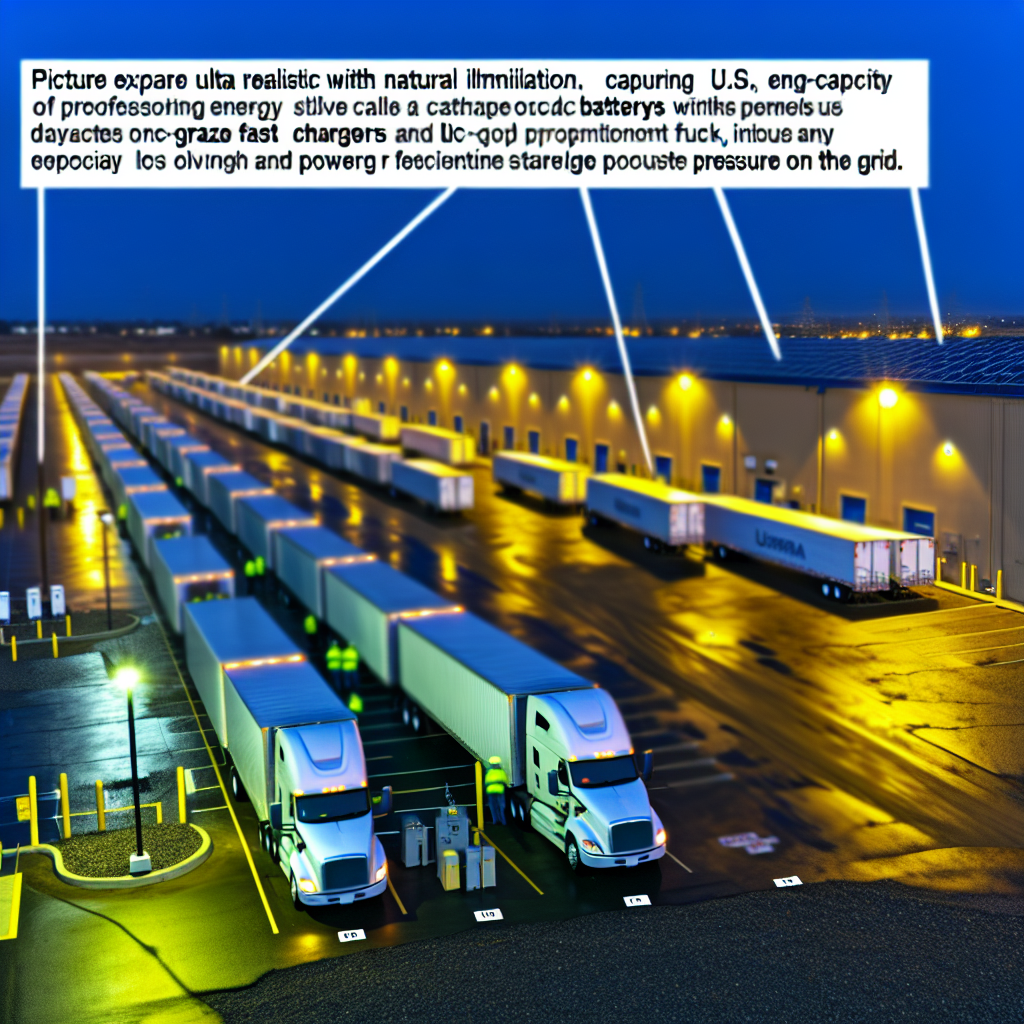Link Logistics is putting energy management at the center of how it serves tenants, rolling out tools and infrastructure meant to lower utility bills, tame price volatility and ready buildings for an electrified freight future. The company’s approach — treating power as a landlord-delivered amenity alongside space — is aimed squarely at the “split incentive” that has long discouraged capital upgrades in triple-net industrial leases. For trucking and logistics operators, that reframing turns a warehouse from a passive shell into an active energy platform with measurable operational payback.
The timing is no accident. New survey work released this week by Prologis points to “energy reliability” as a defining supply chain constraint for 2026, alongside AI-driven operations. Shippers and 3PLs told researchers they are bracing for an energy crunch and are looking to landlords for solutions — from capacity planning and onsite generation to smarter metering and controls. For fleets weighing facility choices, that message is clear: power resilience is fast becoming a core site-selection metric, not a nice-to-have.
Utilities are racing to catch up. In California, PG&E just outlined a $73 billion transmission buildout through 2030 to meet a decade of expected load growth tied to data centers and other large users. That scale of spend reflects a broader reality: interconnection timelines and grid upgrades, not just chargers and trucks, will determine how quickly freight can electrify. Landlords who can pre-negotiate capacity or stage interim solutions (submetering, managed charging, onsite storage) will remove months — even years — of uncertainty for tenants.
Power competition is intensifying beyond California. In the Pittsburgh region, data centers are already straining the grid and pushing commercial bills higher, a microcosm of what many freight hubs should expect as AI infrastructure scales. On Wall Street, investor appetite for power-hungry real estate is surging: a data-center REIT co-founded by former U.S. Energy Secretary Rick Perry debuted today after raising roughly $683 million in its IPO to build multi-gigawatt campuses. For trucking, these signals point to a market where megawatts get spoken for early — making energy-secure warehousing a strategic moat.
Meanwhile, diesel remains a moving target for fleet budgets. The U.S. average on-highway price update released Tuesday underscores that fuel volatility hasn’t vanished, even as more operators test battery-electric drayage and local distribution. Blending smarter energy procurement with efficiency upgrades at facilities gives carriers an immediate lever to de-risk operating costs while they chart longer-term drivetrain choices.
That’s the lane Link Logistics is trying to pave at scale. By centralizing utility accounts, deploying revenue-grade metering and analytics, and funding efficiency retrofits (LED, high-efficiency equipment, and solar where feasible), the firm says it can align building-owner capital with tenant savings — and create the certainty needed to plan for electrified yard equipment and trucks. In practice, that means fewer utility deposits and billing disputes, clearer visibility into load profiles, and a path to hedge exposure to power-price swings. For carriers, it means docks and yards that are increasingly “charger-ready,” with the landlord sharing the heavy lift.
Why it matters to trucking: delivery windows, dwell time and driver productivity live or die by site reliability. If a facility can’t guarantee enough power for dock equipment today — or for truck charging tomorrow — you inherit avoidable costs and service risk. The smartest play in network design now is to pressure-test power upstream: ask landlords for documented spare capacity, interconnection status, submetering, demand-charge mitigation plans and contingency options (onsite storage or temporary service) before you sign. Pair that diligence with a realistic ramp for medium- and heavy-duty EV pilots so charging buildouts can track fleet needs rather than outpace them.
The broader backdrop is sobering, but it favors proactive partners. With utilities pouring money into the grid and energy-intensive sectors reserving capacity years ahead, industrial landlords who can deliver both space and power — and show the data to prove it — will earn the freight. Link’s customer-focused energy model is one way to get there; the early winners in trucking will be the fleets that insist on it.
Sources: FreightWaves, Prologis, Reuters, Axios, U.S. Energy Information Administration
This article was prepared exclusively for TruckStopInsider.com. Republishing is permitted only with proper credit and a link back to the original source.




